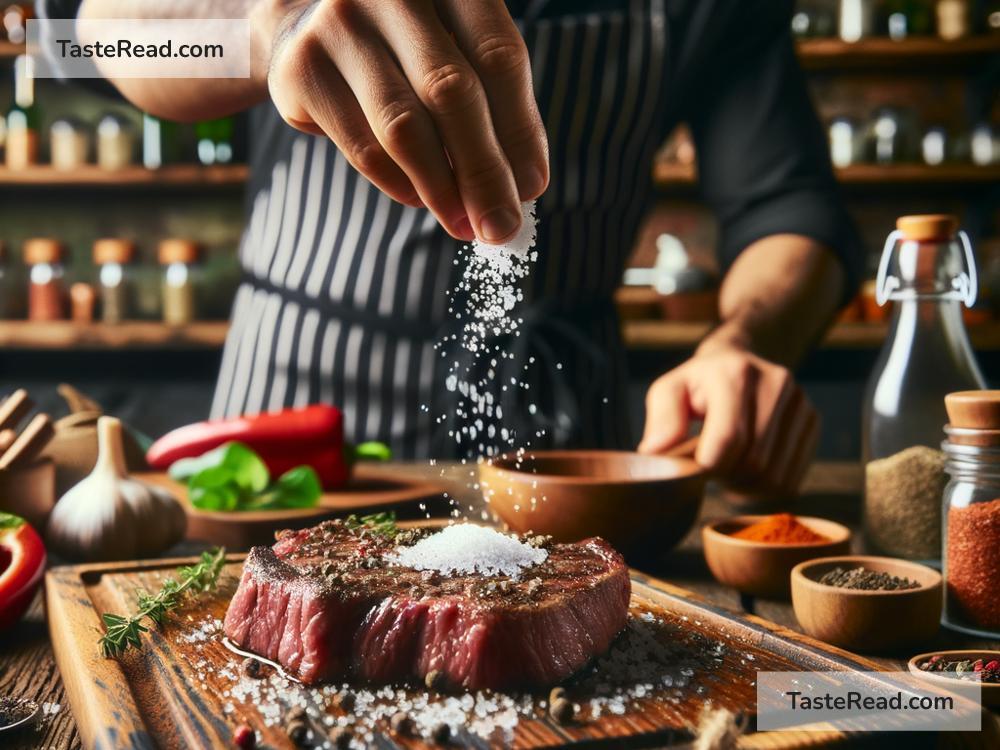The Science of Cooking with Salt: Techniques and Tips
Salt plays a major role in how food tastes. Have you ever wondered why a pinch of salt can make such a big difference in your cooking? Salt does much more than add flavor—it impacts texture, color, and even how your food cooks. Understanding the science behind salt can help you become a better cook.
In this blog, we’ll explore how salt works, why it’s important in cooking, and some useful techniques and tips to level up your dishes.
What Is Salt?
Salt is made up of two elements: sodium and chloride. When you add salt to food, it dissolves and spreads its flavor. Salt is one of the basic tastes our tongue can detect, along with sweet, sour, bitter, and umami. This is why it has such a powerful ability to make food taste better.
Beyond just taste, salt also interacts with food at a chemical level, which affects texture, water content, and even cooking times.
How Salt Enhances Flavor
Salt is more than a seasoning—it’s a flavor enhancer. It doesn’t just make food salty; it helps bring out the natural flavors in ingredients. For example, when you sprinkle salt on a tomato, it amplifies its sweetness and tangy taste. This happens because salt reduces bitterness and balances flavors.
Salt can also make sweet foods taste sweeter. That’s why a tiny pinch of salt in cookie dough or cake batter can make desserts taste richer.
The Role of Salt in Cooking
Salt does many things in cooking that go beyond flavoring. Here are some key roles it plays:
-
Drawing Out Water: Salt pulls water out of ingredients. This is why adding salt to cucumbers or eggplant makes them release moisture. When you want crisp vegetables or want to remove water before cooking, salt quickly gets the job done.
-
Tenderizing Meat: Ever wondered why chefs use salt to marinate meat? Salt breaks down proteins, making meat softer. This process is called brining—soaking meat in a solution of salt and water. Brining makes foods like chicken or turkey juicy and flavorful.
-
Preservation: Salt has been used for thousands of years to preserve food. It prevents bacteria from growing by drawing out moisture. You see this in foods like cured meats or pickles.
-
Helping with Browning: Salt plays a role in the Maillard reaction, which is the process that gives seared meat and baked bread their golden-brown color. Adding salt to the surface of meat or dough before cooking helps enhance this delicious browning.
-
Regulating Boiling and Freezing Points: Ever heard that adding salt to water helps it boil faster? While that’s technically true, the effect is small. Salt also lowers the freezing point of water, which is why it’s used in ice cream-making machines.
When to Add Salt
Timing is important when using salt. The right time to add salt depends on what you’re cooking. Here are some guidelines:
-
While Cooking: Adding salt early allows it to fully dissolve and blend into the dish. For soups, sauces, and stews, adding salt gradually throughout the cooking process lets you control the flavor.
-
Before Cooking: For meats and vegetables, salting them ahead of time helps improve texture and enhance flavor. Rub salt on raw meat or sprinkle it on sliced vegetables like zucchini to draw out moisture before sautéing.
-
At the End: For delicate foods like salads or eggs, adding salt right before serving preserves its crisp taste. Finishing touches of flakey sea salt make a big impact on foods like grilled steak or roasted vegetables.
Types of Salt
There are several types of salt, and they each have their own uses. Let’s look at a few:
-
Table Salt: Fine and easy to measure, table salt is what most people keep in their kitchens. It’s great for everyday cooking.
-
Kosher Salt: Chefs love this coarse salt because it’s easy to pinch and sprinkle. Kosher salt is great for seasoning meat and vegetables.
-
Sea Salt: This salt comes from evaporated seawater and often has trace minerals that give it a unique flavor. Use it as a finishing salt on dishes.
-
Flaky Salt: Flaky salts like Maldon are light and crispy. They’re perfect for garnishing dishes because they add texture and bursts of flavor.
Tips for Cooking with Salt
-
Taste as You Go: Salt can easily overpower a dish if you’re not careful. Make sure to taste your food as you cook and add salt a little at a time.
-
Don’t Only Rely on Salt: Salt is essential, but it’s not the only seasoning your food needs. Spices, herbs, and acids like lemon juice can boost flavor without making dishes too salty.
-
Use Brining for Meats: If you’re cooking chicken, turkey, or pork, brining can make a huge difference. Mix water and salt (plus optional herbs and sugar) to create a brine. Let the meat soak for a few hours before cooking.
-
Season Layer by Layer: Add salt to each layer of your dish—for example, season vegetables before sautéing, then season the sauce separately. This ensures balanced flavor.
-
Experiment with Finishing Salts: Sprinkle flaky salt on roasted vegetables, grilled meats, or even chocolate desserts for a burst of texture and flavor.
Conclusion
Salt is more than just a pantry staple—it’s a powerful tool in cooking. From enhancing flavors to improving texture, salt plays an important role in making food delicious. By understanding how and when to use salt, you can elevate your cooking to the next level.
So the next time you cook, take a moment to appreciate the tiny crystals of salt that make your dishes shine. Whether you’re salting vegetables, brining meat, or adding a pinch to your cookies, you’re harnessing the science of salt for better-tasting food.


